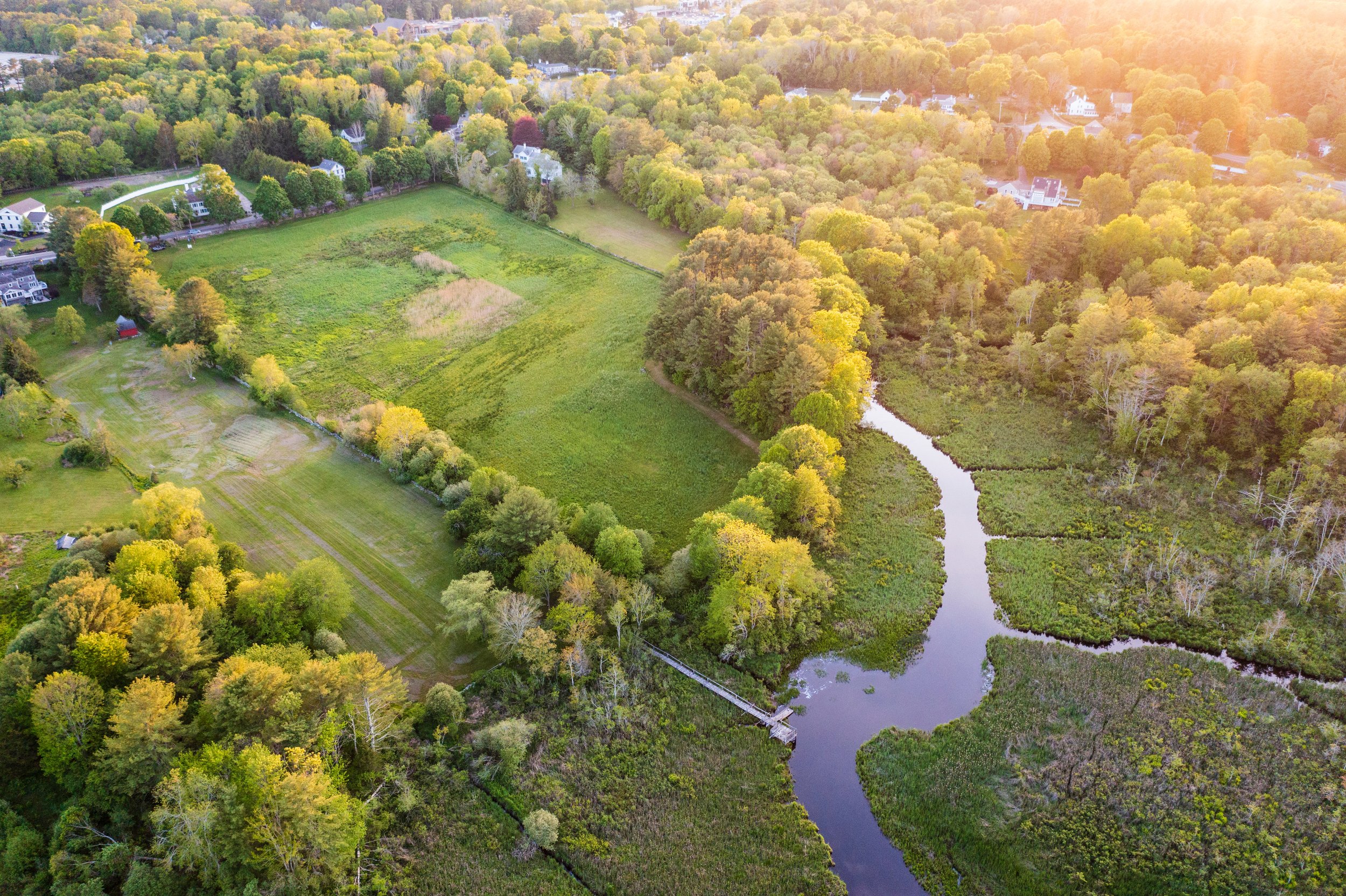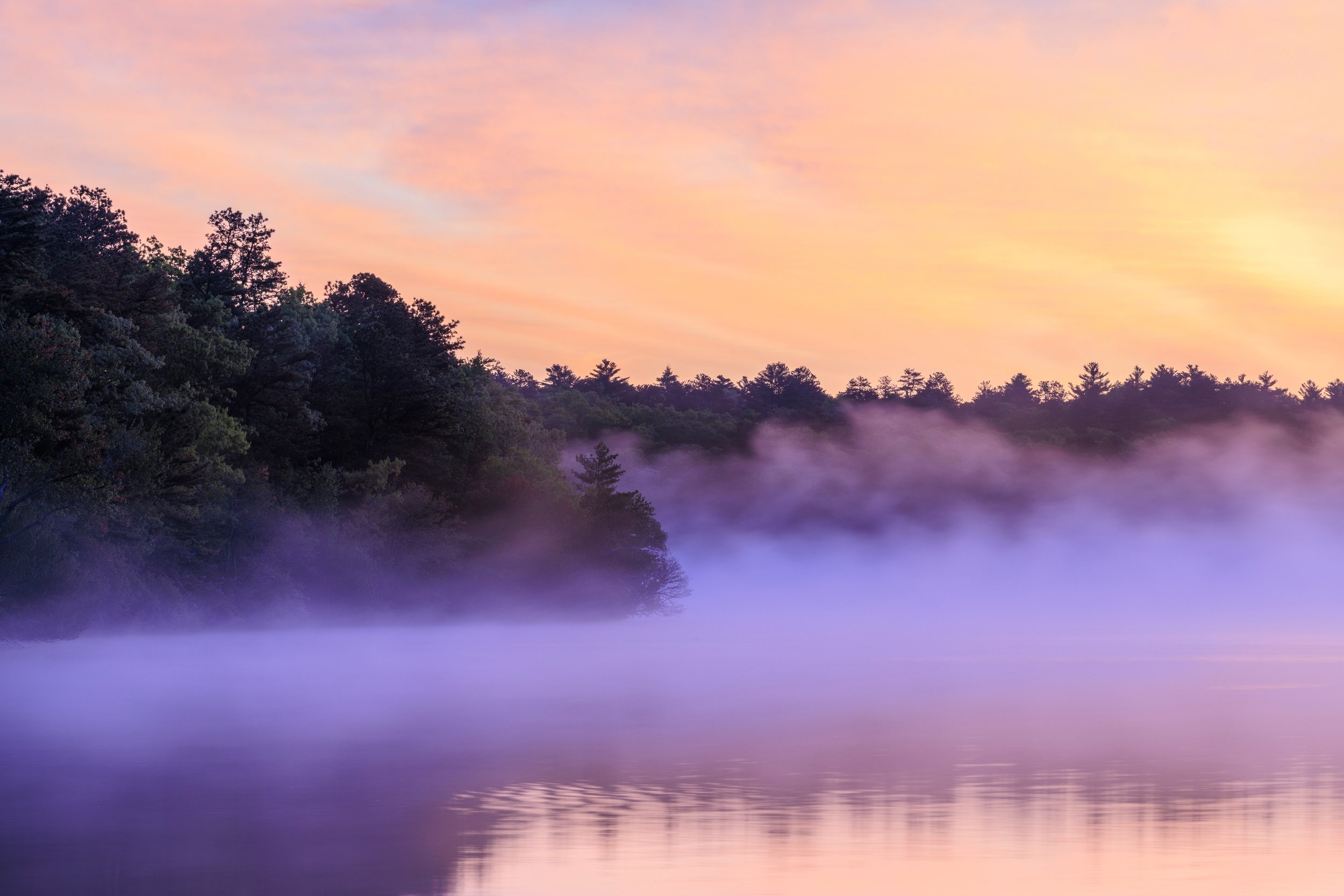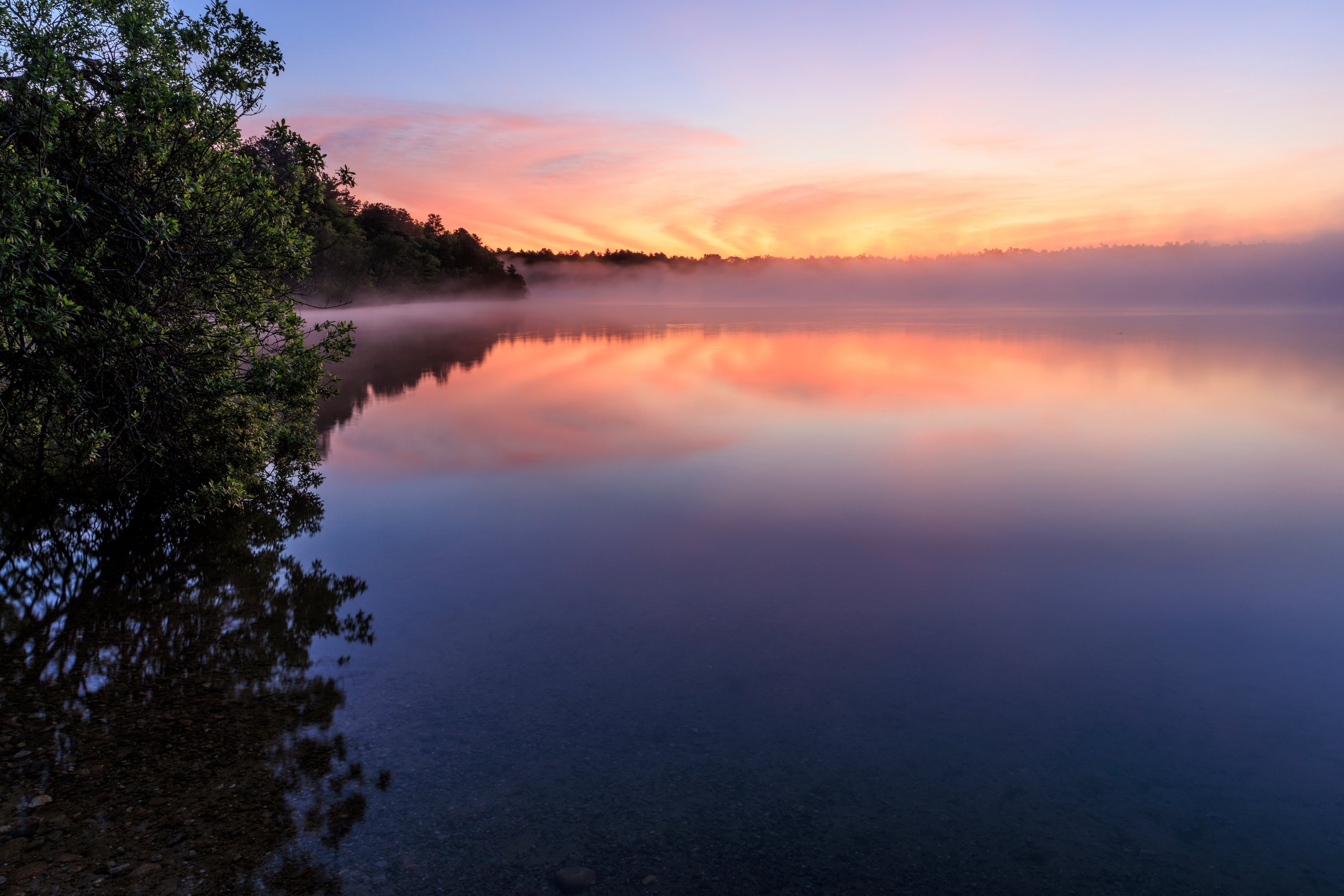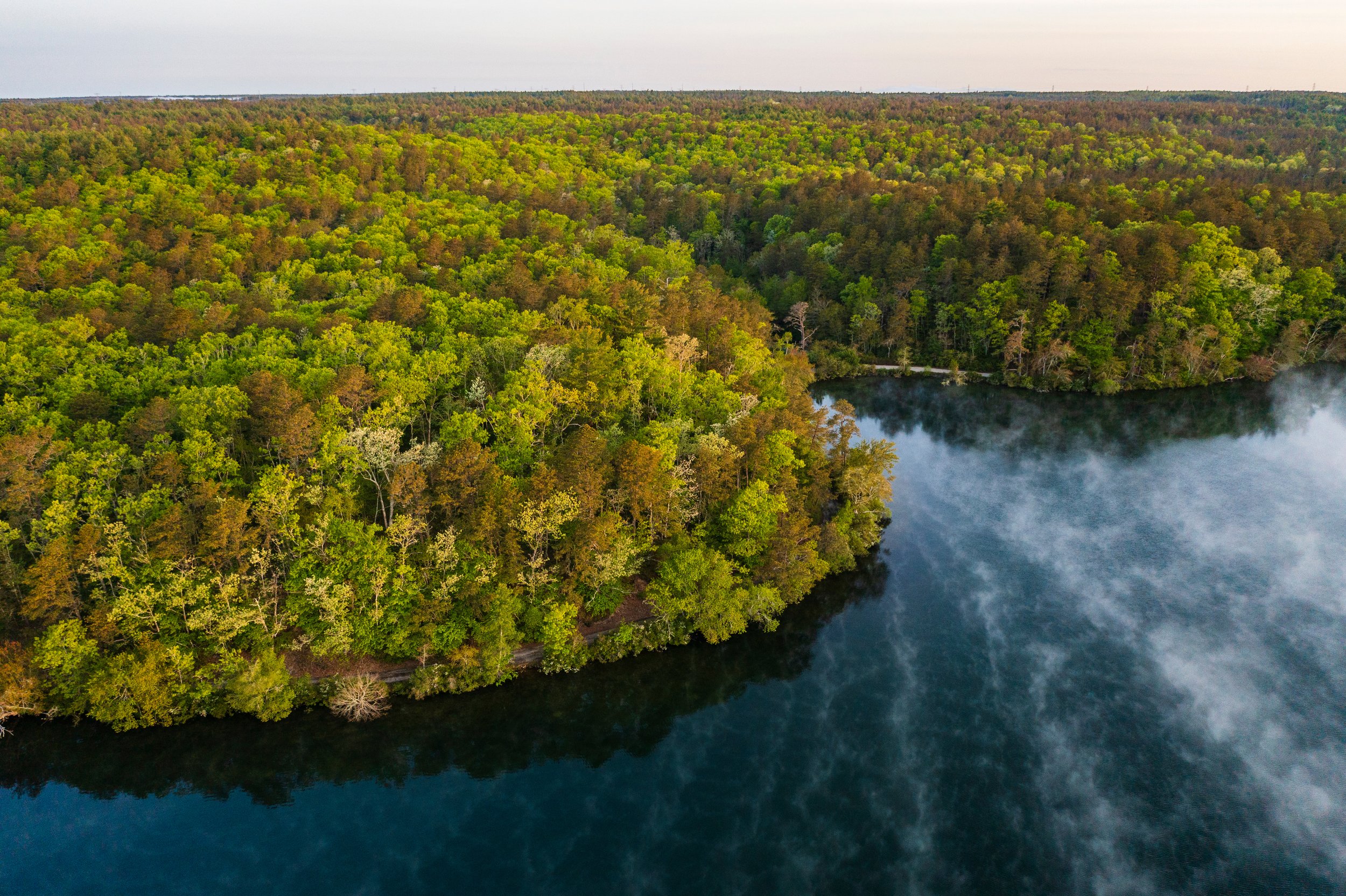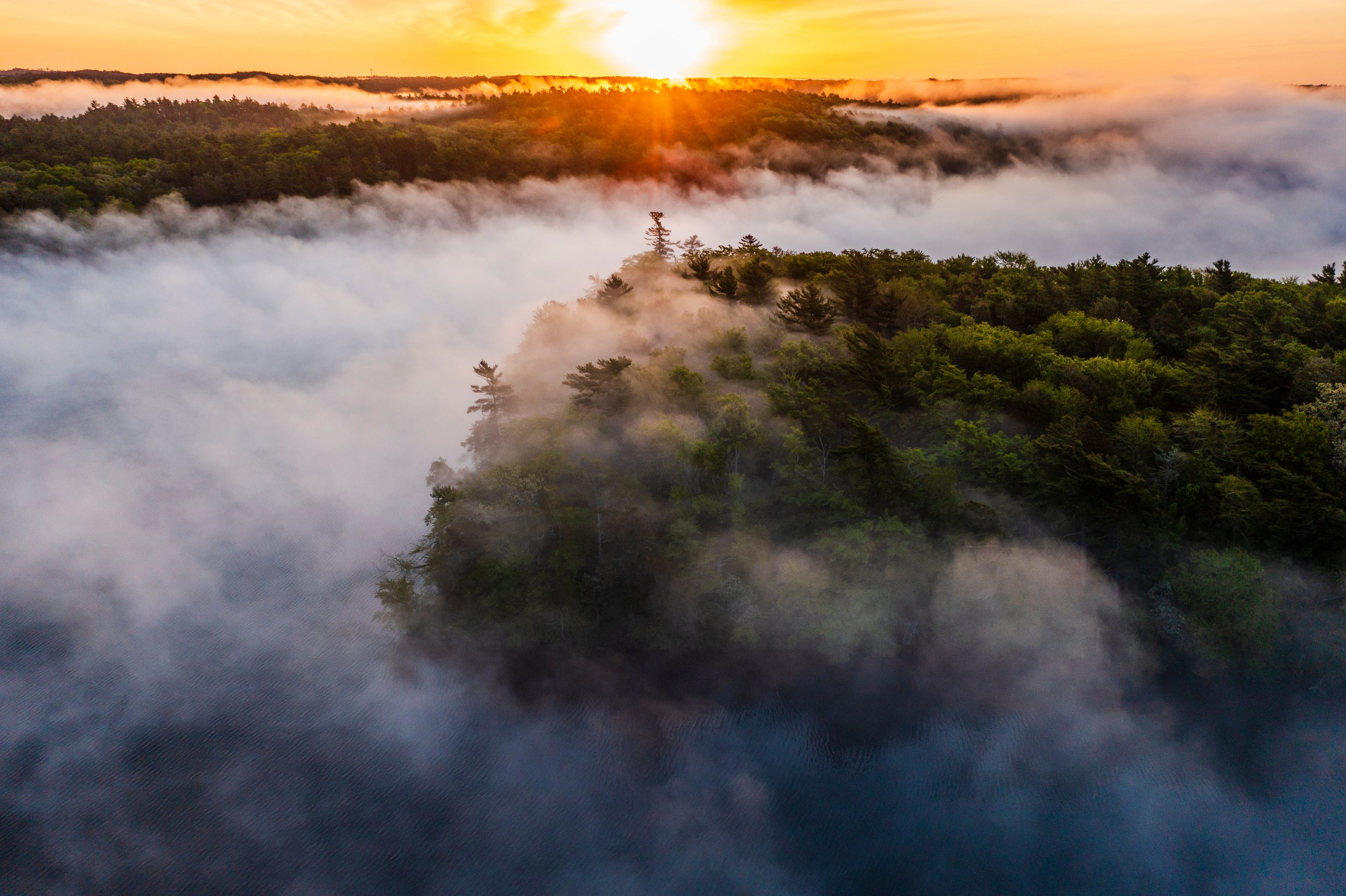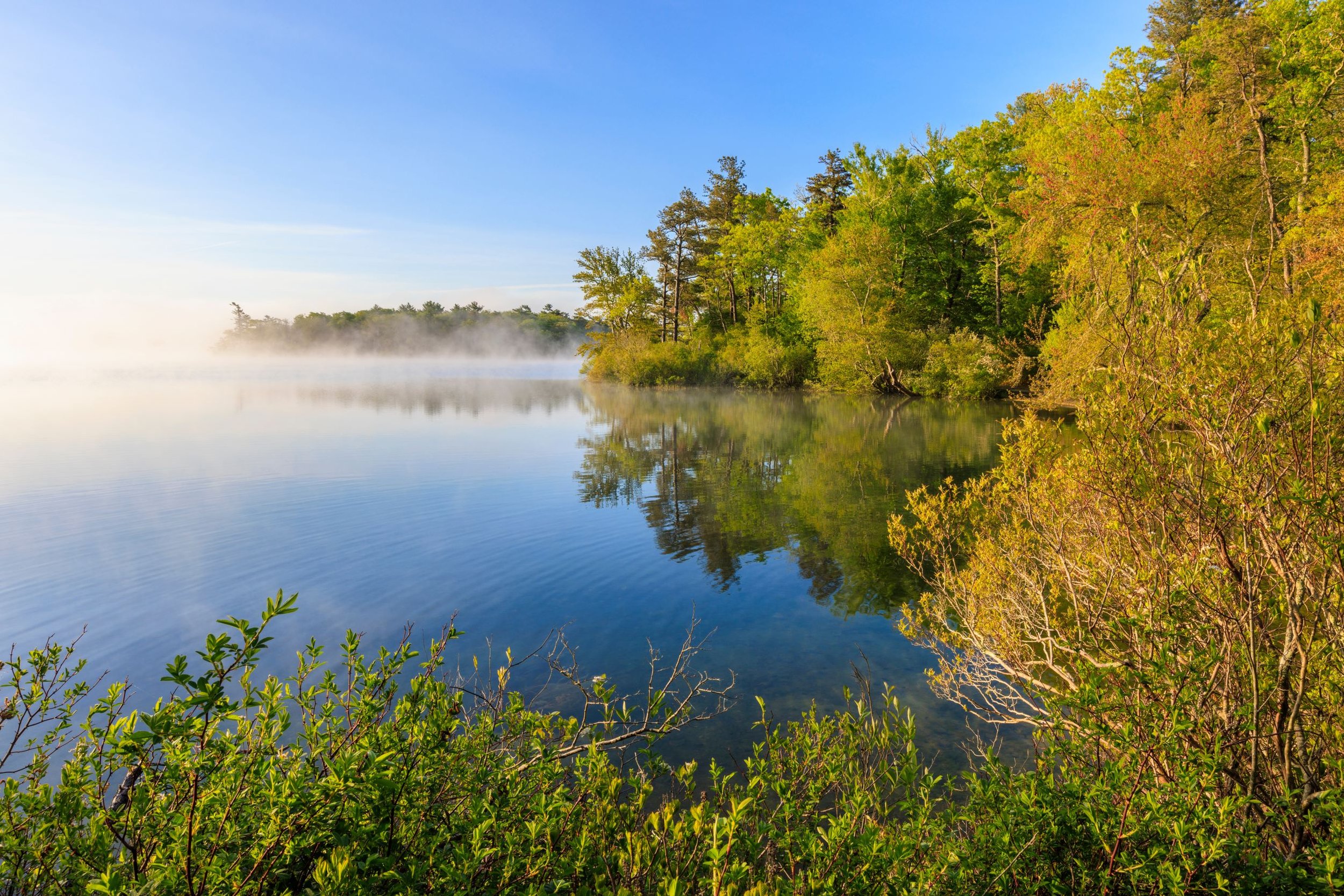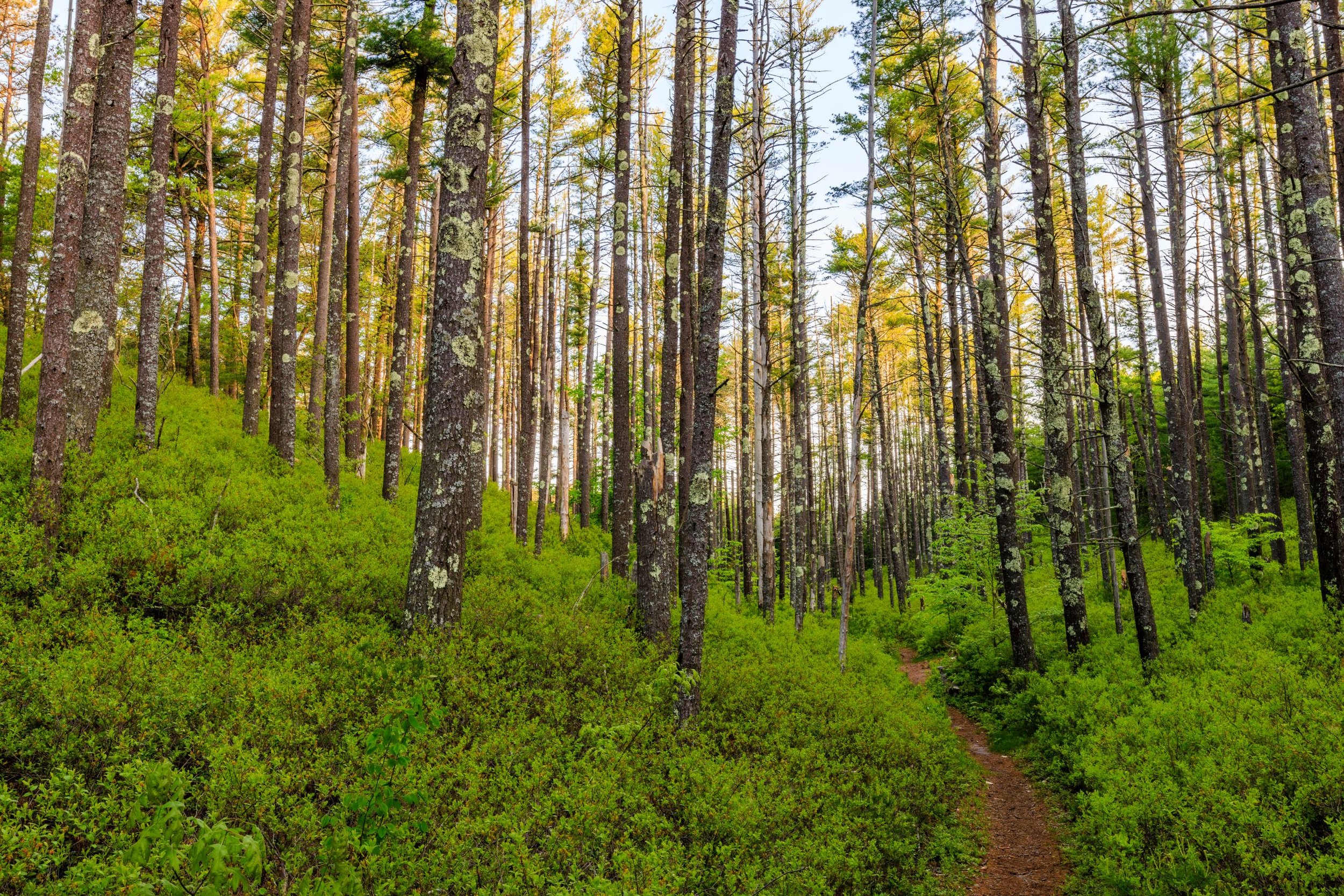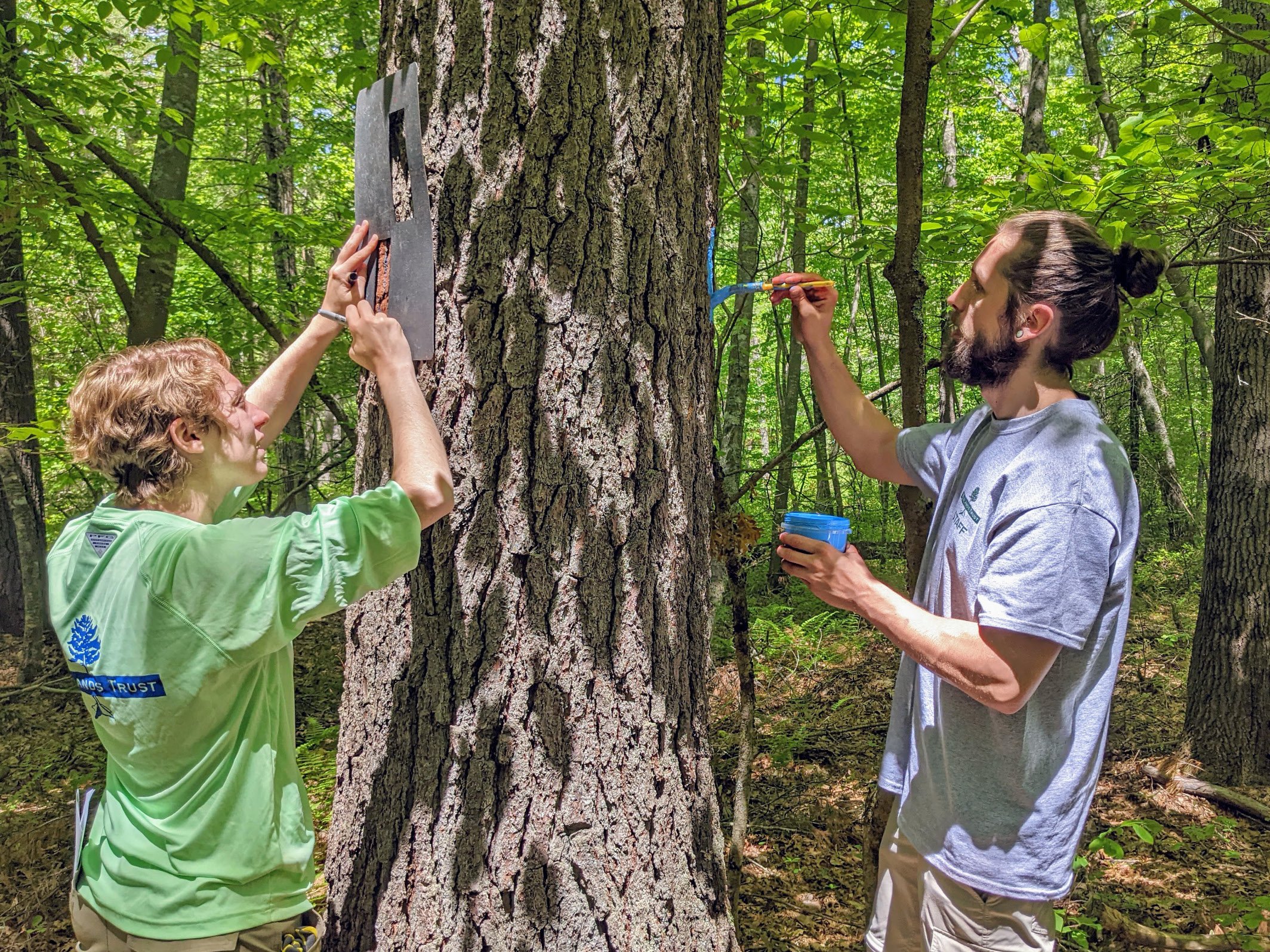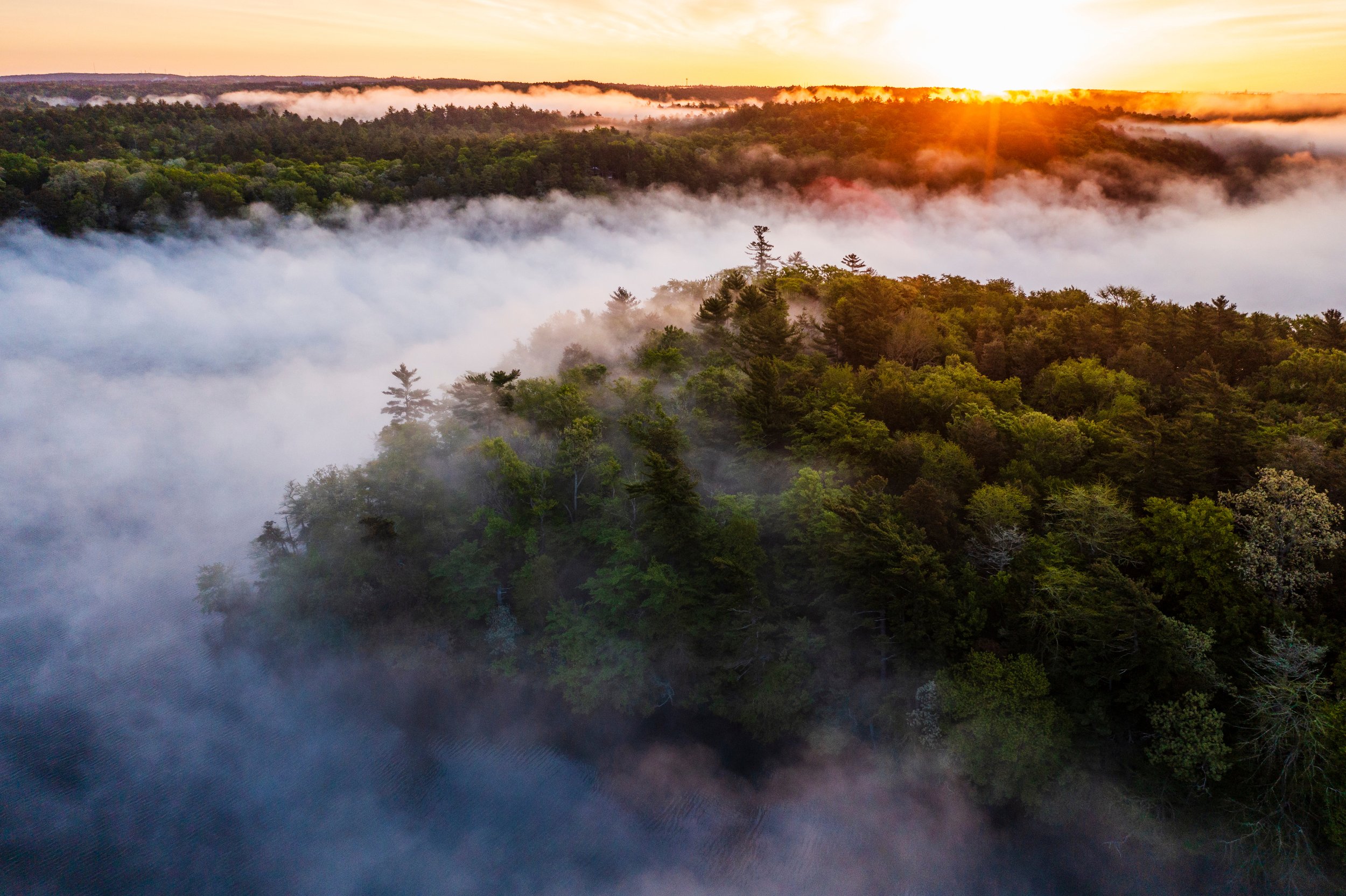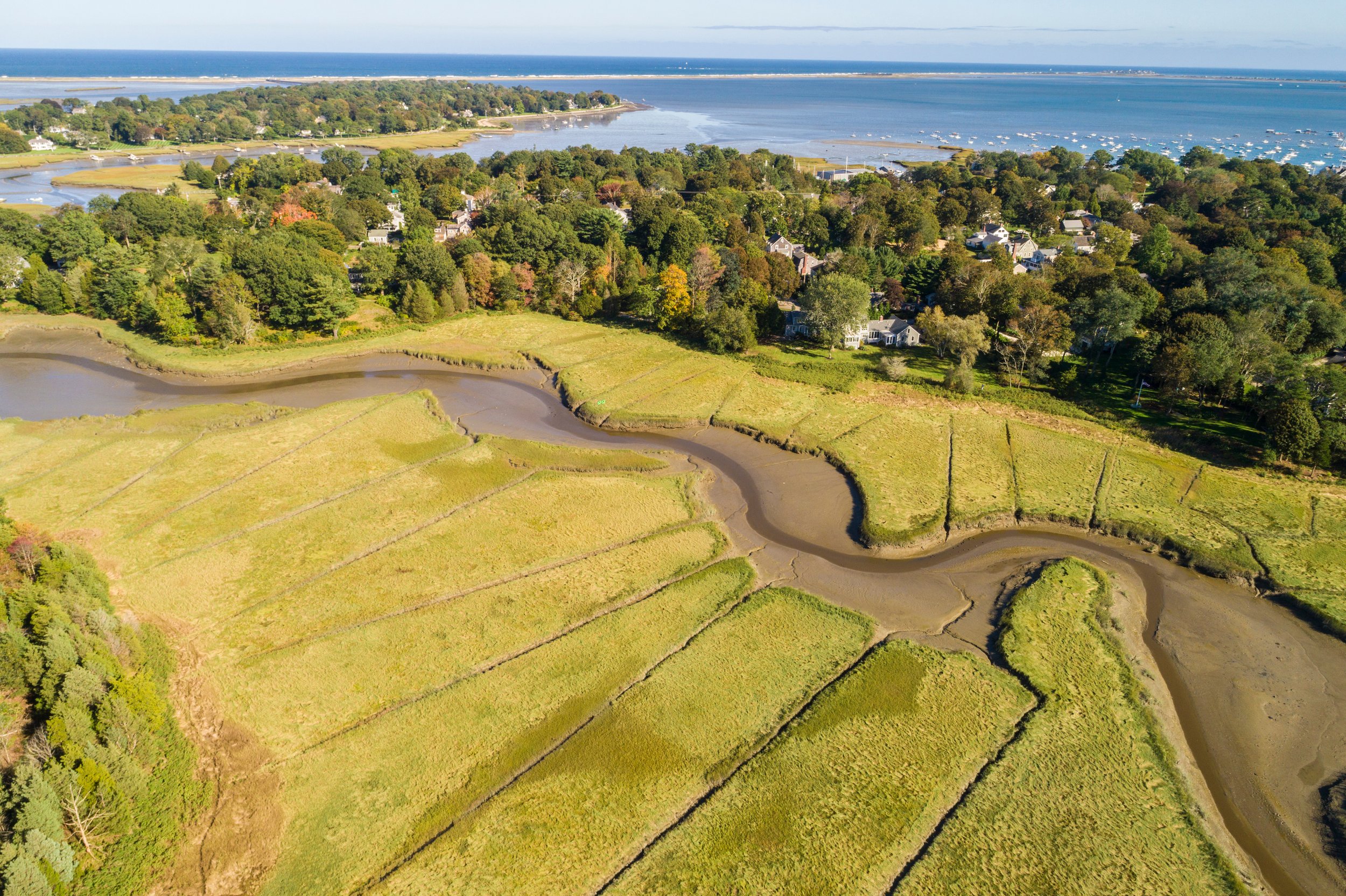Read Time: 5 min
By Amy Markarian, Senior Copywriter
Imagine finding out that, sometime in the next 50 years, you will no longer be able to access your own house. You might see the warning signs leading up to its isolation from neighboring lands, but it could just as easily happen overnight, with one unanticipated weather event. You’d probably look to sell pretty quickly and hope to escape the obvious challenges this would create. But when you're a land conservation organization and the “house” expected to become an island is one of your properties, that’s not an option. Wildlands Trust owns land “in perpetuity” -- forever -- and we are responsible for its upkeep, regardless of what that might entail. For this reason, we always need to be thinking ahead...What will this land be like in the future? How will we be able to get to it? Are there ways that we can plan now to ensure that this land will adapt to anticipated changes?
An analysis of climate mapping tools and projections conducted by former staff member Matt Luongo revealed that this daunting scenario is not farfetched for some of Wildlands’ properties. For example, projections show that migrating saltmarsh could one day completely wash over the only access road that leads to Cushman Preserve, in Duxbury. We have to consider—now—“how will we access and care for this land then?” The same is true for many of our other lands.
Climate change is a topic that plenty of us would prefer to avoid. It’s seemingly far off and the possibilities are grim. But here at Wildlands, we don’t have the choice to look the other way. We have 300 properties to maintain and a responsibility to prepare for the changes that lie ahead, especially at our coastal properties facing the greatest risks of erosion and water-related problems as global temperatures rise. For this reason, we have conducted a comprehensive climate resilience assessment and created a strategic plan to guide both the management of our existing properties and our future acquisition decisions.
Matt Luongo and Wildlands’ stewardship team developed the action plan in 2019, integrating climate mitigation and adaptation potential into our land acquisition criteria and stewardship practices. The goals of the plan are to prepare us for future realities that may impact our lands, while also helping us to maximize the benefits of our preserved open spaces as “natural climate solutions” for the region. According to Nature4Climate (N4C), an initiative of the United Nations Development Programme, nearly a third of the Paris Climate Accord’s 2030 goal for cost-effective, global carbon dioxide mitigation can be met with natural climate solutions, which include both land conservation and land management practices that reduce and store carbon emissions. In addition, natural climate solutions are expected to provide a buffer against extreme weather events and provide ecological refuge for displaced and/or migrating wildlife.*
Wildlands’ Land Acquisition Criteria
Properties containing habitats -- including cold-water streams, tidal marshes, and vernal pools, to name a few -- are expected to be most vulnerable to climate change. Therefore, Wildlands’ land acquisition criteria prioritize protection of both habitat-containing lands and adjacent green spaces (which will allow for ecological migration as needed). Identified lands are also prioritized for additional focus in both day-to-day stewardship and future grant applications to support efforts to increase resilience there. Simultaneously, highly resilient lands -- like dunes, barrier beaches, and tidal marshes -- are prioritized for acquisition for their ability to help mitigate the effects of climate change in the short term and/or to buffer against its future effects on Southeastern Massachusetts.
Wildlands’ strategic plan favors the acquisition of properties that are suitable for long-term adaptation and resilience over those with short-term mitigation potential. However, all conserved land is beneficial in the context of climate change and, with many factors to consider, the adaptation criterion alone is not a reason for Wildlands to acquire or forego a property.
Land Management Plans
Vulnerability and resilience assessments were conducted to develop management plans for each of Wildlands’ existing Showcase Preserves and coastal Community Preserves, using data available in 2019. Assessments for each property outlined the landscape context, identified habitats and rare species, evaluated current stewardship tasks and climate vulnerabilities, considered potential public health and environmental justice issues, acknowledged climate resiliencies, and determined any immediate actions needed. Based on this information, each property was assigned two scores (on scales of 1-5), one for its climate vulnerability and the other for its resilience. Various mapping tools, including The Nature Conservancy’s “Resilient Mapping Tool” and Manomet’s “Green Infrastructure Network,” along with data from Resilient MA, the Commonwealth’s Climate Clearinghouse, and FloodIQ, provided quantitative justification for this scoring.
Using these vulnerability and resilience scores, all of our Showcase Preserves were then graphed to identify the highest priorities for deliberate management strategies, according to the assessment data collected. Properties with a vulnerability score that equaled or exceeded its resilience were determined to be of greatest concern. These included: Cushman Preserve (Duxbury), Shifting Lots Preserve (Plymouth), Hoyt-Hall Preserve (Marshfield), Halfway Pond Conservation Area (Plymouth), Brockton Audubon Preserve (Brockton), Striar Conservancy (Halifax), Willow Brook Farm (Pembroke), and Great Neck Conservation Area (Wareham).
Wildlands Trust is one of Massachusetts’ oldest and largest regional land trusts, with 50 years of experience and more than 13,000 acres protected. Our organizational priorities include permanently protecting natural landscapes and keeping our communities healthy -- both of which are imperiled by rising temperatures. As such, we recognize our responsibility to take deliberate action to address climate change, and we want our community members to feel confident in our ability and commitment to do so. When we vow to ensure that our lands are protected in perpetuity, we are prepared to honor that commitment through whatever challenges may lie ahead. In relation to climate change, this means that Wildlands Trust is both planning to manage anticipated challenges and proactively working to be a part of possible solutions.
*https://nature4climate.org/about/purpose

